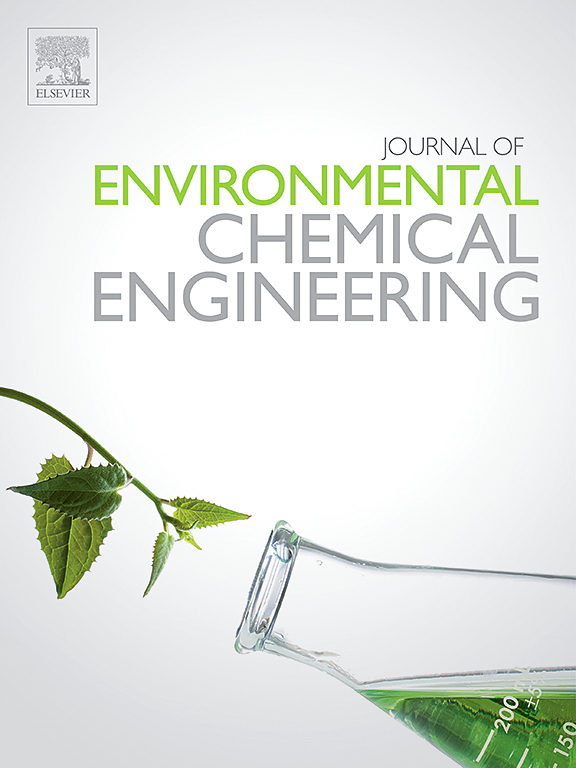Environment-friendly chitosan-modified-poly(vinyl alcohol) or (PVA)/sodium alginate (SA) electrospun nanofiber membrane (ENM) adsorbent was prepared for the removal of As(III) from an aqueous solution. The chitosan(CS)-functionalized-PVA/SA ENM (CS-f-PVA/SA) was characterized by scanning electron microscopy (SEM), Fourier transform infrared spectroscopy (FTIR), thermogravimetric analysis (TGA), and X-Ray diffraction (XRD). The CS-f-PVA/SA ENM showed the maximum As (III) adsorption capacity at neutral pH (540.40 mg g−1). The adsorption experiments were conducted by varying the initial pH of the arsenic solutions and also in the presence of different coexisting anions, such Cl- and F-, SO42−, and PO43−. Moreover, the kinetic studies were performed to depict the rate of As(III) sorption onto CS-f-PVA/SA ENM. The As(III) adsorption reached equilibrium within 90 min, which well fitted to the pseudo-second-order kinetic model. The initial pH of arsenic solutions greatly affected the adsorption efficiency but the presence of competing anions in arsenic solutions showed a moderate effect on the arsenic adsorption. The FTIR and XRD analyses suggest that–NH2, –OH, and C–O functional groups of CS-f-PVA/SA ENM are responsible for As(III) uptake. The prepared CS-f-PVA/SA ENM can be easily regenerated using 0.003 M NaOH, and the As(III) removal rate was still above 90–50% after ten successive adsorption-desorption cycles. Thus, such a nanofiber-based adsorbent is quite promising for the removal of As(III) from potable water and can be beneficial in combating the current challenges of arsenic pollution. © 2021 Elsevier Ltd
2021
Chitosan-functionalized sodium alginate-based electrospun nanofiber membrane for As (III) removal from aqueous solution
- Journal of Environmental Chemical Engineering
